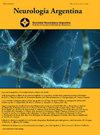2023年保健广场总医院脑血管疾病患者的社会人口特征和临床发展情况
Q4 Medicine
引用次数: 0
摘要
脑血管病(CVD)是影响人类的主要疾病之一,在美洲-因此在我国-作为死亡原因排名第二。它也是全世界致残的主要原因。目的了解2023年在总医院(General de la Plaza de la Salud)治疗的心血管疾病患者的社会人口学特征和临床进展。材料与方法采用回顾性资料收集的观察性、描述性、横断面研究。对年龄、性别、疾病类型、临床表现、合并症、影像学方法、血糖水平、住院时间和临床结果等变量进行评估。样本包括105名患者。结果两种类型CVD的主要年龄组均为65岁及以上,分别占缺血性脑卒中病例的47%和脑实质出血病例的64%。在蛛网膜下腔出血中,主要年龄组为33-40岁,占病例的31%。81%的缺血性脑卒中患者住院时间小于7天。相比之下,蛛网膜下腔出血和肺实质出血的住院时间分别大于或等于7天的占58%和73%。缺血性卒中患者存活出院的比例最高,为96%,而蛛网膜下腔出血为58%,肺内出血为73%。结论本研究结果显示,出血性心血管疾病患者的病情进展和住院时间较既往研究更为严重。作为一项建议,卫生当局被敦促为心血管疾病建立专门的护理单位,配备医疗团队,以优化患者的诊断和治疗。本文章由计算机程序翻译,如有差异,请以英文原文为准。
Características sociodemográficas y evolución clínica de los pacientes con enfermedad cerebrovascular atendidos en el Hospital General de la Plaza de la Salud en el período 2023
Introduction
Cerebrovascular disease (CVD) is one of the leading morbidities affecting humans, ranking second in the Americas —and therefore in our country— as a cause of mortality. It is also the main cause of disability worldwide.
Objective
To determine the sociodemographic characteristics and clinical progression of patients with CVD treated at the Hospital General de la Plaza de la Salud during the year 2023.
Materials and methods
An observational, descriptive, cross-sectional study with retrospective data collection was conducted. Variables such as age, sex, type of disease, clinical manifestations, comorbidities, imaging methods, blood glucose levels, hospital stay, and clinical outcomes were evaluated. The sample consisted of 105 patients.
Results
The predominant age group for both types of CVD was 65 years or older, accounting for 47% in ischemic stroke cases and 64% in intraparenchymal hemorrhage. In subarachnoid hemorrhage, the predominant age group was 33–40 years, representing 31% of cases. Hospital stay for ischemic stroke was less than 7 days in 81% of cases. In contrast, subarachnoid hemorrhage and intraparenchymal hemorrhage had hospital stays greater than or equal to 7 days in 58 and 73% of cases, respectively. The percentage of patients discharged alive was highest in ischemic stroke at 96%, compared to 58% in subarachnoid hemorrhage and 73% in intraparenchymal hemorrhage.
Conclusions
According to the study results, the progression and hospital stay of patients with hemorrhagic CVD were more severe compared to those found in reviewed studies. As a recommendation, health authorities are urged to create specialized care units for CVD, equipped with medical teams to optimize patient diagnosis and treatment.
求助全文
通过发布文献求助,成功后即可免费获取论文全文。
去求助
来源期刊

Neurologia Argentina
Medicine-Neurology (clinical)
CiteScore
0.50
自引率
0.00%
发文量
34
期刊介绍:
Neurología Argentina es la publicación oficial de la Sociedad Neurológica Argentina. Todos los artículos, publicados en español, son sometidos a un proceso de revisión sobre ciego por pares con la finalidad de ofrecer información original, relevante y de alta calidad que abarca todos los aspectos de la Neurología y la Neurociencia.
 求助内容:
求助内容: 应助结果提醒方式:
应助结果提醒方式:


